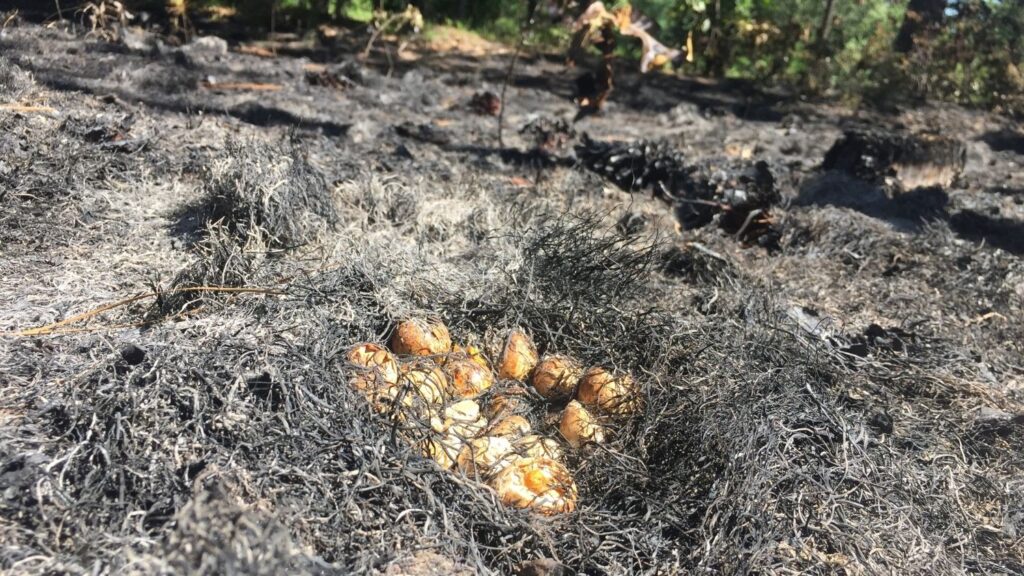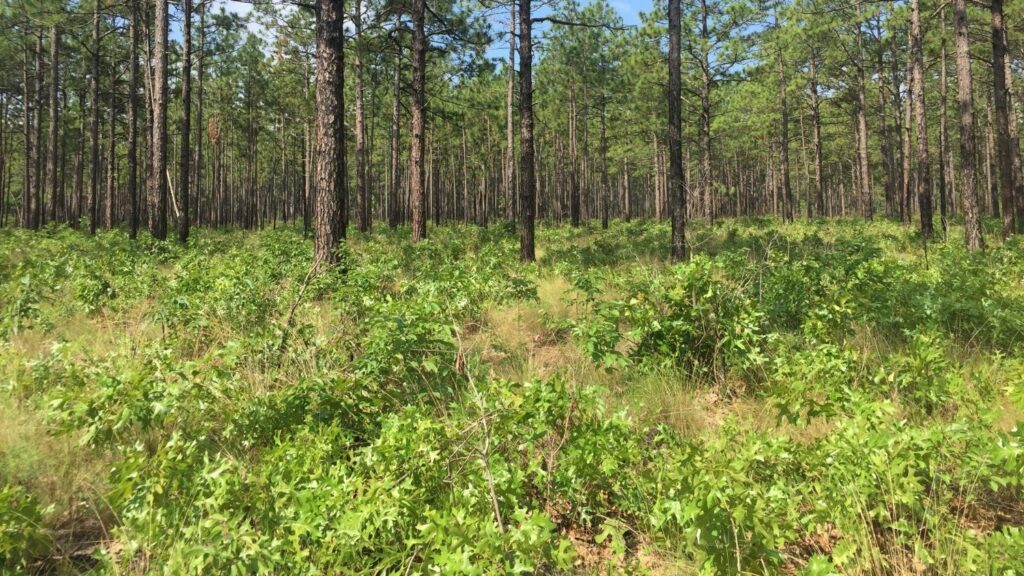Does Prescribed Fire Threaten Quail Nests?

Prescribed fires, often called controlled burns, have become increasingly important tools for land management and wildlife conservation. Research shows that they not only prevent forest overcrowding and reduce the risk of wildfires, but they also improve habitat for a wide range of plants and animals.
However, prescribed burns conducted during the spring and summer – called growing season burns – occur when northern bobwhite quail and many other wildlife species are breeding and nesting. That’s why NC State researchers recently set out to determine whether the timing and frequency of prescribed fire poses an ecological threat to quail nests.
In a three-year study at Fort Bragg, the researchers examined the relationships between the timing of prescribed fires, the risk of nest destruction and the predictors of nest site selection in the presence of prescribed fires.
The researchers trapped quail and fitted them with radio transmitters to monitor their locations and nesting habits, recording nests as being unsuccessful if they were destroyed by fire or predators or abandoned. They then recorded the vegetation conditions at each nest location, pairing their observations with data showing when the site was last burned and at what time of the year.
The Findings, Explained
Overall, the researchers found that if timed correctly, prescribed fire poses a low threat to northern bobwhite quail nests. In fact, according to the study, 67% of nests successfully hatched during the three-year observation period. Only two of the 48 nests were burned by prescribed fire.
Chris Moorman, a professor of fisheries, wildlife and conservation biology at NC State and one of the study’s lead researchers, said the low rate of nest destruction by fire was achieved as a result of Fort Bragg most commonly applying prescribed fire before bobwhite nesting begins.

Because most burning at Fort Bragg occurs from January to May, the fires didn’t interfere with the nesting period of northern bobwhite quail, which typically nest from June to August. For this reason, the researchers don’t recommend shifting burns to later in the growing season if quail are a target species for conservation.
The researchers also found that the frequency of prescribed fire plays a role in the nesting behavior of northern bobwhite quail. In the study, 52% of quail nests were in areas where prescribed fire had been applied two years earlier, according to Moorman.
Fort Bragg typically applies prescribed fire in three-year intervals. After two years, grasses, forbs and some woody understory returned to the study sites but tree density had not yet increased, making the sites ideal for quail nesting.

“What we saw is that quail primarily nested in sites in the first and second year after the fire, and then much less commonly the third year after fire when the site would be scheduled to be burned,” Moorman said. “If there was interest in going to a two-year return interval with fire, then there is a greater potential that a lot of birds would be nesting in places scheduled to be burned.”
But the timing of prescribed fire application can vary regionally, in part due to differences in soil productivity, according to Moorman. In regions where soils are more productive, quail are likely to nest in areas burned more recently because vegetation recovers more rapidly after fires. In these locations, prescribed fire can be applied every two years without negatively impacting quail populations.
Why it Matters
The findings come at a time when northern bobwhite quail — a species of significant economic and ecological value — is experiencing declining populations across the southeastern United States, with an overall trajectory towards local extirpation across much of the region.
In North Carolina, the birds no longer exist in large portions of their historical range, according to Moorman. “The main driver is land use change, especially more intensive farming that leaves less weedy vegetation used as feeding, nesting and hiding cover by quail,” he said.
Northern bobwhite quail typically live in areas with low tree density that allow for the growth of grasses and forbs, according to Moorman. Small family farms once provided these ideal habitat conditions. However, as farms continue to grow and become more efficient, the plant cover and invertebrate species necessary for quail to thrive are disappearing.

Additionally, forests across the southeastern U.S. are becoming increasingly dense. “When you have dense, closed canopy forests, the understory is shaded, so you don’t get the ground-level vegetation structure that provides cover and food for quail,” Moorman said.
Forest density was once controlled by the purposeful use of fire by Indigenous people and lightning-caused wildfires. Although prescribed fire is often used locally to decrease forest density, it remains largely underused on larger scales, especially on private lands.
The relatively low occurrence of frequent fires across most of the southern landscape will continue to limit efforts to conserve northern bobwhite quail and other fire-assisted wildlife species. Increased use of prescribed fire, especially on private lands, is of critical importance to the conservation of these species.
- Categories: